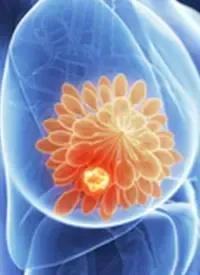News
Article
Neoadjuvant SHR-A1811 Plus Pyrotinib Shows Preliminary Efficacy, Safety in HER2+ Breast Cancer
Key Takeaways
- SHR-A1811 and pyrotinib combination showed promising antitumor efficacy in HER2-positive breast cancer with a tpCR rate of 78.6%.
- The trial's primary endpoint was tpCR, with secondary endpoints including bpCR, RCB, ORR, and safety.
Neoadjuvant SHR-A1811 plus pyrotinib generated response and had a manageable safety profile in HER2+ breast cancer.
HER2-Positive Breast Cancer

Neoadjuvant treatment with SHR-A1811—a novel anti-HER2 antibody-drug conjugate—in combination with pyrotinib led to antitumor activity and was well tolerated in patients with HER2-positive breast, according to data from the phase 2 MUKDEN 07 trial (NCT05635487) presented at the 2024 ESMO Congress.
Findings showed that evaluable patients (n = 29) achieved an overall total pathologic complete response (tpCR) rate of 78.6% (95% CI, 59.1%-91.7%). The tpCR rates were 75% in cohort A (n = 8), 66.7% in cohort B (n = 4), 70% in cohort C (n = 10), and 100% in cohort D (n = 7).
The breast pathologic complete response (bpCR) was 78.6% in the overall population, and a residual cancer burden (RCB) of 0 or 1 was achieved in 89.3% of patients. The overall response rate (ORR) across all patients was 89.7%. The ORR was 100% in cohort A, 75% in cohort B, 90% in Cohort C, and 85.7% in cohort D.
“SHR-A1811 combined with pyrotinib as neoadjuvant therapy for HER2-positive breast cancer may lead to promising antitumor efficacy with a manageable toxicity profile,” lead study author Caigang Liu, MD, PhD, an oncologist at Shengjing Hospital of China Medical University in Shenyang, China, and colleagues, wrote in a poster presentation of the data.
Study Design and Patient Characteristics
The open-label, multi-cohort, MUKDEN 07 trial enrolled patients between 18 and 75 years of age with stage II or III HER2-positive breast cancer. Patients needed to be treatment-naive and had an ECOG performance status of 0 to 1.
The trial included four cohorts with varied doses of SHR-A1811 and pyrotinib. Cohort A was designated as the initial treatment group, where patients received SHR-A1811 at 4.8 mg/kg intravenously once every three weeks alongside 240 mg of oral pyrotinib once daily for 6 cycles. If the regimen in cohort A was tolerated, those in cohort B received SHR-A1811 at 5.6 mg/kg once every 3 weeks plus 240 mg of pyrotinib once per day for 6 cycles.
Cohorts C and D provided alternative dosing options: cohort C maintained the 4.8 mg/kg dose of SHR-A1811 but reduced pyrotinib to 160 mg once per day, and cohort D adjusted SHR-A1811 to 4.0 mg/kg once every 3 weeks plus pyrotinib at 240 mg once per day. At the data cutoff on May 6, 2024, 29 patients had been treated across the 4 cohorts.
The primary objective of the trial was tpCR rate. Secondary end points included bpCR rate, RCB rate, ORR, and safety.
In the overall cohort, the median age was 55 years (range, 38-61). The majority of patients also had hormone receptor (HR)–positive disease (62.1%) and had a HER2 expression of immunohistochemistry 3+ (72.4%). The median Ki-67 level was 40% (range, 5%-70%). Patients had either stage IIA disease (34.5%), stage IIB disease (41.4%), stage IIIA disease (3.4%), stage IIIB disease (6.9%), or stage IIIC disease (13.8%). Tumor sizes included T2 (89.7%), T3 (3.4%), and T4 (6.9%). Most patients (62.1%) had positive lymph node status.
Additional Efficacy and Safety Data
Analysis by HR status revealed that HR-negative patients experienced slightly higher tpCR rates (81.8%) compared with HR-positive patients (76.5%).
Four patients experienced dose-limiting toxicities (DLTs): diarrhea in cohorts A and C, neutropenia in cohort B, and thrombocytopenia in cohort D.
The most common treatment-related adverse effects reported in at least 20% of patients included diarrhea (any-grade, 100%; grade ≥3, 51.7%), anemia (93.1%; 20.7%), nausea (93.1%; 0%), vomiting (82.8%; 0%, neutropenia (79.3%; 62.1%), increased alanine aminotransferase levels (79.3%; 6.9%), asthenia (79.3%; 0%), leukopenia (72.4%; 44.8%), and hypokalemia (62.1%; 24.1%).
Reference
Liu CG, Niu N, Qiu F, et al. SHR-A1811 in combination with pyrotinib as neoadjuvant treatment for HER2-positive breast cancer (HER2+ BC): Preliminary results from MUKDEN 07. Ann Oncol. 2024;35(suppl 2):S331. doi:10.1016/j.annonc.2024.08.21







